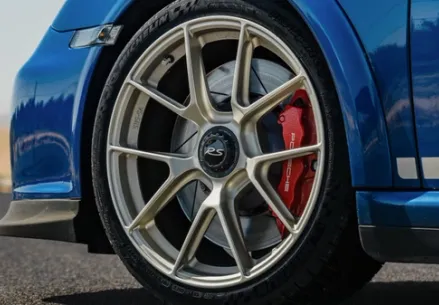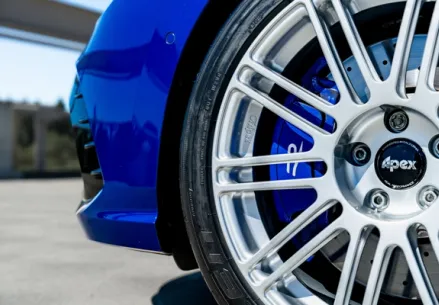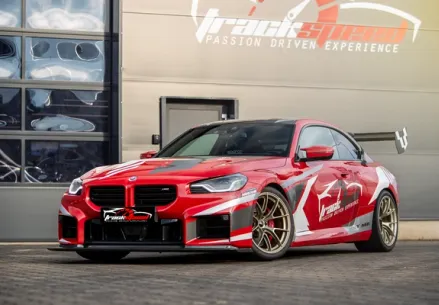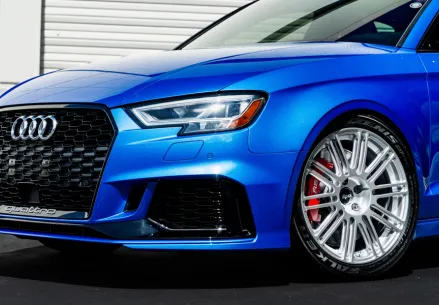
How Deeper and Wider Side-Milling Makes Wheels Lighter
Article | 11/08/2021 by Brandon Kimbell
Updated on 08/06/2024
Our new Sprint™ line of wheels features much deeper and wider side milling on the spokes versus our first generation of forged wheels. This improvement was made possible by our new motorsport blanks which allow us to create narrower yet significantly deeper spokes. The larger surface area on the side of each spoke allows us to take more material out. Doing so creates a much stiffer “I” beam or c-channel spoke shape.
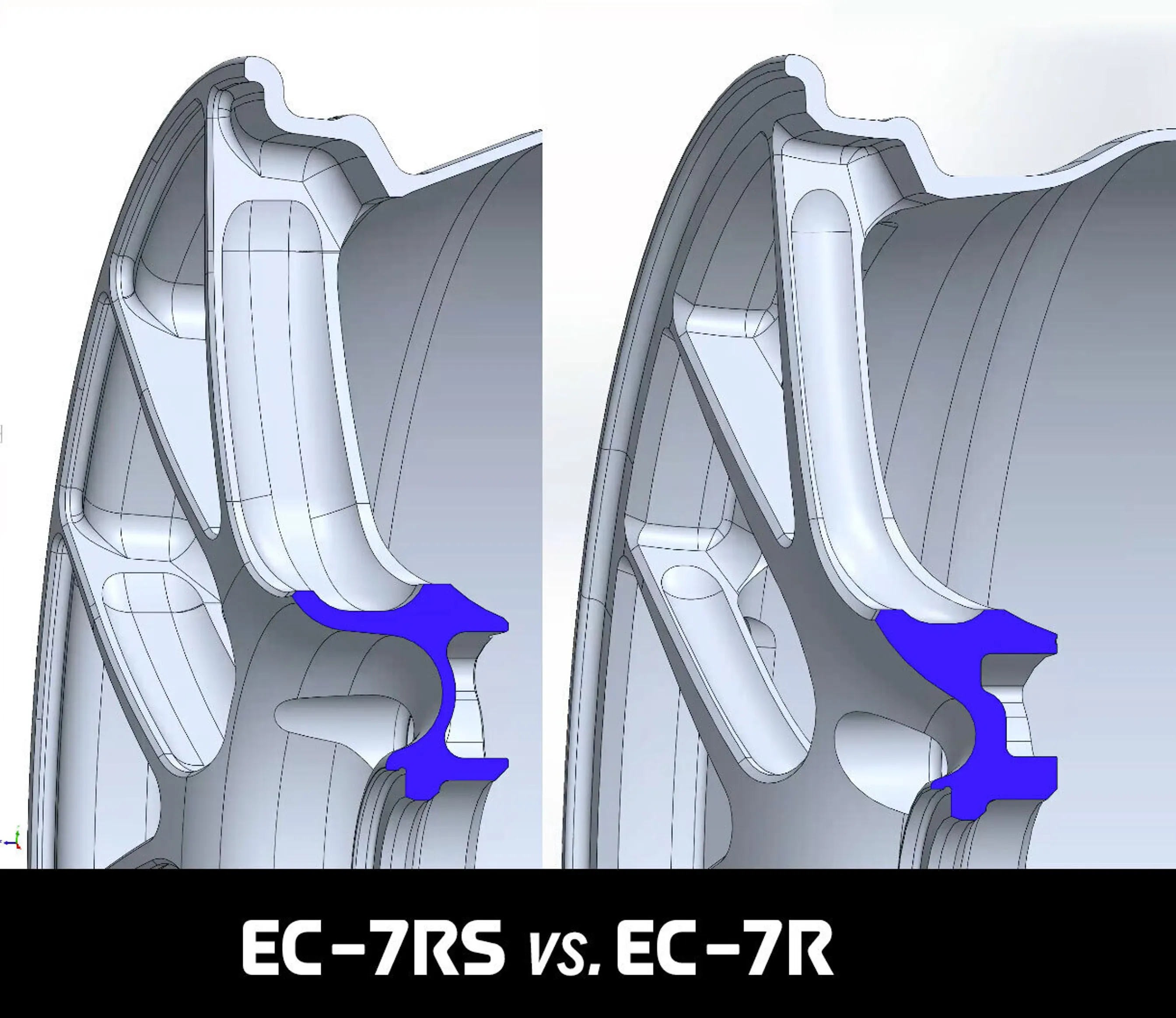
Using a ball cutter we now cut 50-100% deeper than before and 40-100% wider. The milling on some of the wheels is almost 50mm wide now. When you see it in person it almost looks like we used an ice cream scoop to carve out material.
The updated EC-7RS has 3.9 times more material removed from the spokes than the original EC-7R does. That saves more than an extra pound of weight from the face of the wheel which gives us the freedom to reinvest some of that weight savings back into the inner lip by adding significant reinforcement to that critical area.

One of the main reasons for designing deeper spokes with wide side milling is to create a more optimal “I” beam shape. The new EC-7RS now has a face that is 50% stiffer than the original R version, giving us more strength while using less material. As a side benefit, the stiffer face deflects less under load, which maintains more consistent camber while cornering.
Unfortunately, consumers are often misled to believe that forged wheels are automatically stiffer than cast or flow formed wheels just because they are forged. Stiffness is very much dependent on the design of the wheel, not just the raw material or manufacturing process.
We conduct extensive FEA (Finite Element Analysis) to determine just how much material we can safely remove from the wheels. Optimal designs almost always require complex machining paths, resulting in many time consuming passes back and forth on the CNC. That’s why side milling is one of the most time-consuming parts of the entire machining process, and why most wheel manufacturers usually do it in a cheaper, less weight-optimal manner or skip it entirely.
There’s a big difference between functional and aesthetic side milling. It’s common for manufacturers to add simple milling to look cool and check off another feature box without adding much benefit at all. We often see milling that’s just a few millimeters deep or extra narrow, which produces an insignificant weight savings. Cutting deeper or wider would slow their machining down and increase their production costs, so there’s little motivation to really cut the fat off a wheel.

Although it’s hard to see, the width and depth of the machining is always changing along the spoke of our Sprint line wheels. It’s shallow where the spokes meet the rim and deep near the center pad. They’re oval or chisel in shape which can’t be done with a single pass. It actually takes hundreds of passes per spoke window, which adds up to thousands of passes for the entire wheel to achieve the milling we’ve designed. It’s expensive, but anything less would leave weight on the table.
Tags
 Brandon Kimbell
Brandon KimbellBrandon is a Porsche Fitment Expert at APEX Wheels. Prior to joining APEX in 2022, he worked as Office Manager for a Porsche & Ferrari service and race shop, guiding customers in all areas – suspension, power, aesthetics, you-name-it. His first foray into racing came In college when he was asked to assist at a PCA club race. Says Brandon, “I figured if I am already making the drive, I might as well enter the HPDE happening at the same time.” He hasn't stopped since. Among the various cars he has owned and/or tracked are a ‘74 Corvette Convertible, ’74 Firebird Formula 400, ‘17 GTI, ‘07 Cayman S, and his current ride, a ‘12 Cayman R (BGB X51 pack 3.8L) with staggered APEX EC-7RS 18x9”ET46 & 18x10” ET36 in Motorsport Gold. Fun Fact: Brandon is a big fan of SIM racing, which he uses to learn about a new track he’s going to or get a refresher on a familiar track, as well as improve his racecraft.Have questions about wheels for your Porsche? Use our contact form and ask for Brandon.
If you like cheap gear you will hate this newsletter.

